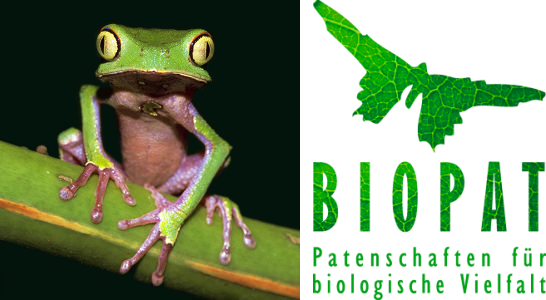Artenkatalog
Catalogue of species
Gärtner's Freund
Regenwürmer gehören zu den wichtigsten und trotzdem unbeachtesten Arten. Sie tragen als Zersetzer organischen Materials im Boden entscheidend zur Humusbildung und damit zur Bodenfruchtbarkeit bei. Charles Darwin behauptete 1881 sogar, dass die ganze Zivilisation darauf beruht. Trotzdem gibt es derzeit auf der ganzen Welt keinen einzigen Vollzeit-Regenwurm-Taxonomisten mehr -im Gegensatz zu zahlreichen Spezialisten für marine Würmer. So liegt z.B. die letzte große Studie (über Regenwürmer in West-Australien) schon 110 Jahre zurück. Die aktuelle Arbeit von R.Blakemore hat jedoch spannende neue Erkenntnisse geliefert und in Londons Museum für Naturgeschichte mindestens fünf neue Arten ans Tageslicht gebracht.
Für die weitere Erforschung dieser neuen Arten wird um eine Spende von mindestens 2.800 Euro gebeten.
(Das Foto zeigt ein Regenwurm-Musterbeispiel aus Wikipedia)
Nr.: 288

- Gattung / Genus:
Graliophilus (previously Plutellus) - Neuer Art-Name / New species name:
- Herkunft / Origin:
Western Australia, Jarrah forest - Beschreiber / Describer:
Robert Blakemore
Gardeners buddy
Earthworms are one of the most important yet most neglected groups. Important: because they sustain soil fertility and are the basis of all food-chains as well as being major detritivores recycling organic-matter to produce humus – or vermicompost – upon which Charles Darwin (1881)* said civilization depends. Neglected: because not one full-time earth-worm taxonomist remains at any institution anywhere in the world (compared to many marine worm specialists), and there is little or no funding for soil biodiversity (in contrast to the huge financial support for space and marine biology). For example, the last broad study of Western Australian earthworms was 110 years ago by Wilhelm Michaelsen (1907 - “Oligochaeta.” In: Die Fauna Südwest-Australiens 1(2): 117-232, Gustav Fischer, Jena). The current work unearthed more than five unique species now in the Natural History Museum, London.
To support further investigations on this species a minimum donation of 2.800 Euro for the naming of one of these new earthworms is expected.
Darwin, C.R., (1881). The formation of vegetable mould through the action of worms, with observations on their habits. John Murray, London. Pp 328.
(The poto shows as an example a "generic worm" from Wikipedia)
